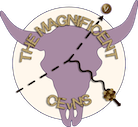Speaker
Description
The search for dark matter requires extremely sensitive detection techniques. In this context, atmospheric muons, though typically considered background, can be used as a tool for detector spatial calibration. This work is based on data from the CONNIE experiment, which employs a vertical array of CCD sensors to detect ionizing particles at a distance of 30 meters from the core of the Angra 2 nuclear reactor in Rio de Janeiro, Brazil. A high purity sample of muons was extracted, their trajectories were reconstructed, and their spatial distribution was characterized. A calibration method based on identifying muon coincidences across sensors was developed, allowing the determination of relative misalignments between detectors with a precision better than 45 micrometers. This technique constitutes a valuable tool for low energy particle physics experiments.
